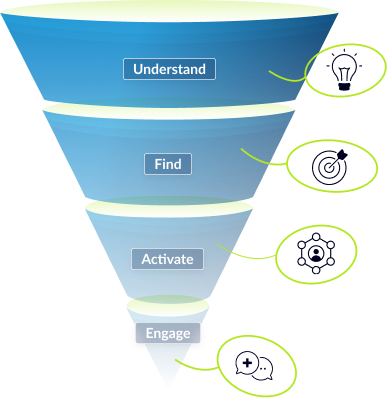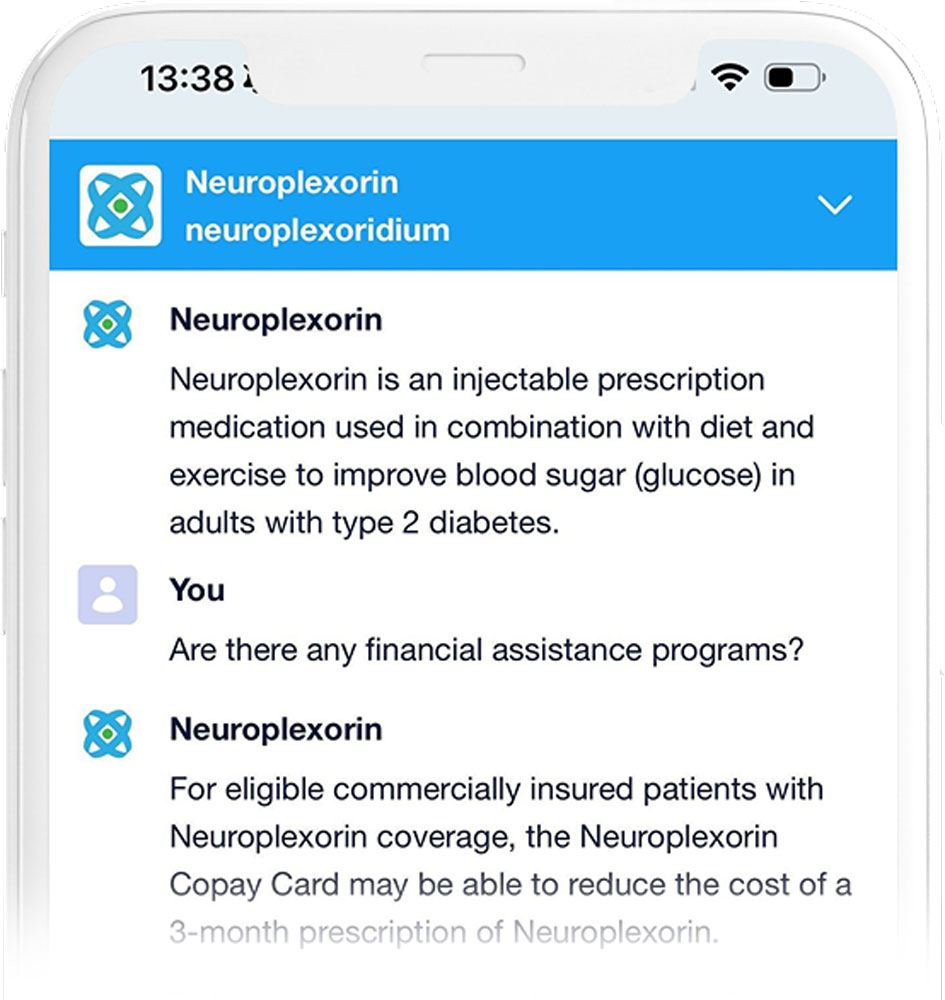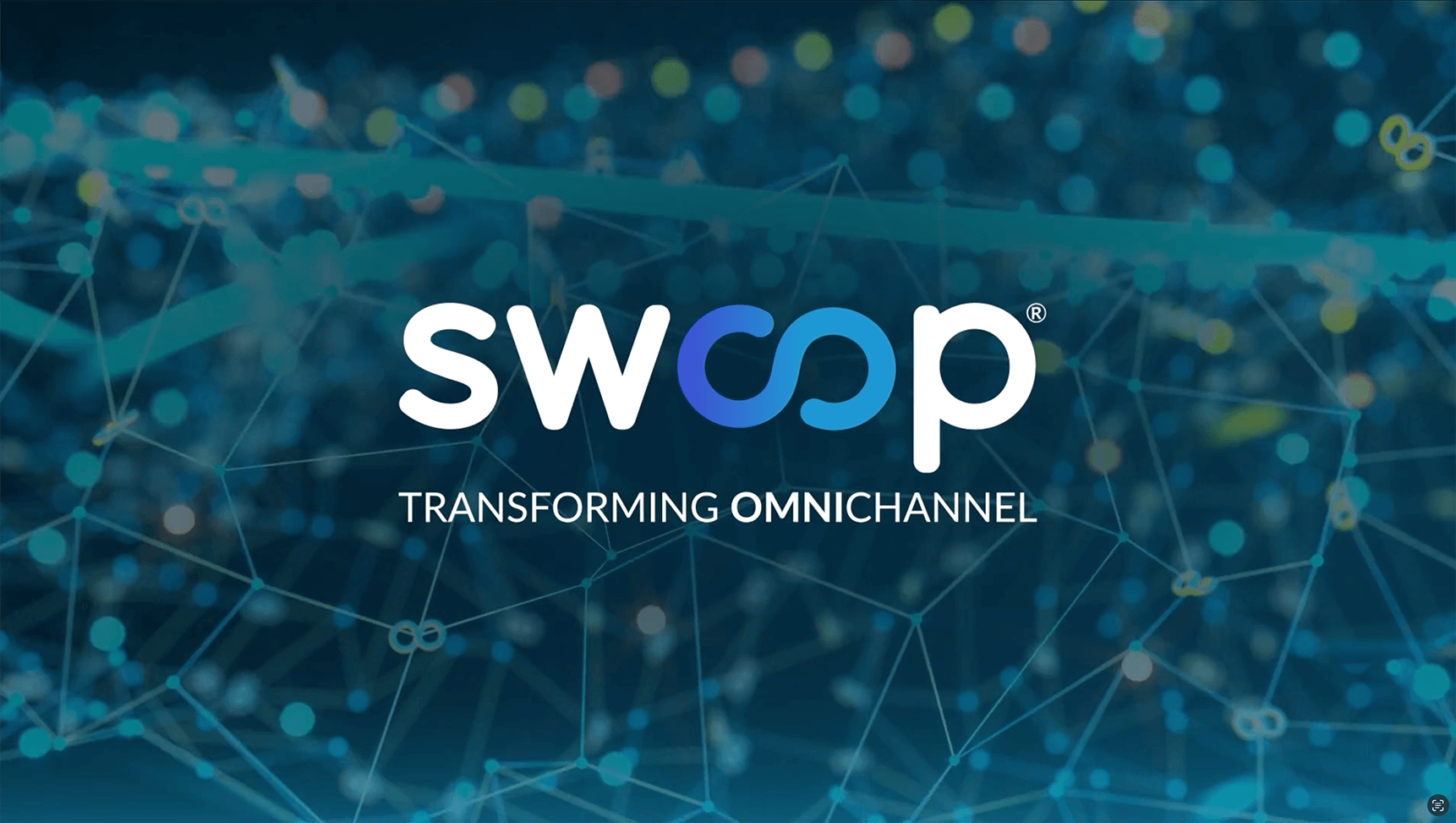
Transforming Omnichannel
By Putting Patients First
Delivering optimal performance and helping marketers improve patient outcomes through privacy-safe, smarter, data-driven solutions.
Artificial Intelligence
Swoop’s Commitment to Innovation: A Winning Formula for Healthcare Marketing
At Swoop, innovation isn’t just a buzzword. It’s the lifeblood of our company culture.
MyHealthTeam
Empowering Patients: How Pharma Ads Drive Better Health Outcomes
Survey reveals 67% of patients with chronic conditions took an action after seeing treatment advertising
Privacy
Swoop Answers Your Data Privacy Questions
As states tighten privacy regulations, partnering with a compliant data provider isn’t just a best practice. It’s a necessity.
Integrate depth of engagement with privacy-compliant reach at scale

Understand
Actionable insights to transform your omnichannel strategy.
Find
DTC-HCP unified audiences with unmatched accuracy.
Activate
One audience. All channels. All states.
Engage
Unparalleled proximity to patient.
Solutions that deliver optimal performance and help marketers improve patient outcomes.
Using smarter, data-driven intelligence to answer three key business questions.
Who to Target?
PRODUCT
DTC Audiences
Drive Rx lift and lifetime patient value by targeting 99% of the ideal audience with 100% privacy compliance.
Product
HCP Pro Suite
Go beyond traditional NPI segmentation and PLD reporting by quantifying every providers’ true brand value.
Product
Predictive Audiences
Predict tomorrow’s target today and reach DTC and HCP audiences before critical health milestones occur.
Where to Engage?
PRODUCT
TV Audiences
Unify planning, activation, and measurement across data-driven linear, addressable, and connected TV.

Product
Communities
Advance patient-first engagement across MyHealthTeam, the largest opted-in condition-specific communities in the U.S.
What to Do?
Product
Swoop Piper
Accelerate omnichannel decision-making through GenAI-powered data analysis, uncovering the insights that matter most.
PRODUCT
Swoop Agents
Unlock unprecedented first-party data by transforming customer engagement.

Privacy, Safety, and Trust
Compliant with privacy laws in all 50 states
De-identified Patient Data
All patient data undergoes a HIPAA-compliant de-identification process, ensuring all personal information is removed.
Zero-knowledge Methodology
Swoop builds audiences without relying on consumer attributes, health data, demographics, or inferred information.
Sustained Compliance
Swoop’s privacy-by-design approach goes above and beyond current state and federal legislation, putting consumer privacy first.
One audience. All channels.
Swoop’s platform-agnostic approach drives data consistency and seamless omnichannel activation across all channels.
Success Stories
Predictive Audiences
A Leading Pharmaceutical Brand Increased Adherence 29% YoY with Swoop’s Patented Predictive Adherence Audiences
With an increased incidence in substance use disorders (SUDs), a MAT therapy wanted to increase adherence within its patient population to drive positive patient outcomes. Leveraging Swoop’s patented predictive technology, the brand was able to accurately identify patients most likely to become non-adherent and activate them programmatically across premium inventory.
DTC Audiences
Advertising on CTV Increases HCP Appointments for Mental Health Drug by 20%
A pharmaceutical brand needed to connect with a limited patient population diagnosed with a sensitive conditionand their caregivers. Swoop utilized its privacy-safe real world health data to create a targetable niche segment for activation on CTV platforms.
DTC Audiences
Activating Patients on Addressable TV Generates 1,500 New-to-Brand Starts for Type 2 Diabetes Drug
A pharmaceutical brand wanted to increase reach, doctor’s visits and drive prescription lift of its Type 2 diabetes drug nationally. Swoop built a privacy-safe segment of patients on the brand and its competitors. Targeted ads on linear addressable devices scaled across MVPDs, maximizing frequency to saturate the North American market.
